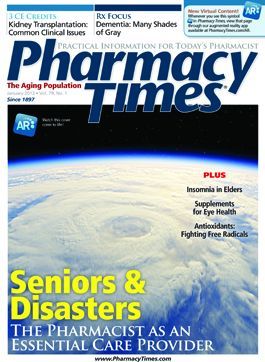Rare But Serious Drug Interactions
In the case of severe but infrequent interactions, pharmacist awareness is key.
In the case of severe but infrequent interactions, pharmacist awareness is key.
In his book about the Nobel Prize—winning physicist Richard Feynman, James Gleick recounted the death of one of Feynman’s colleagues, Louis Slotin, who received a fatal dose of radiation after a screwdriver slipped and a chunk of beryllium fell near a plutonium core. Gleick observed that Slotin failed to multiply the very small risk of an accident by the near certainty of death if an accident occurred. Some drug interactions present a similar statistical pattern. The combination of drugs may increase the risk of a life-threatening adverse outcome, but the likelihood of the interactions occurring may be small.
Suppose, for example, that Drug A given alone causes a particular life-threatening reaction in 1 of 1000 patients, but in patients taking Drug A and Drug B concurrently, the reaction occurs in 3 of 1000 patients. In this case, it is accurate to say that adding drug B to drug A is associated with a tripling of the risk of the life-threatening reaction. This sounds pretty dangerous, until you realize that the overwhelming number of people taking Drug A and Drug B together (997 out of 1000) do not manifest the adverse reaction.
Weighing Risks and Benefits
We have discussed this type of drug interaction in this column over the years. For example, selective serotonin reuptake inhibitors (SSRIs) appear to increase the risk of gastrointestinal (GI) hemorrhage in patients taking nonsteroidal anti-inflammatory drugs (NSAIDs). Such bleeding can be fatal, but the absolute risk of GI hemorrhage in people taking NSAIDs and SSRIs concurrently is low. So for this interaction, it would be prudent to weigh the potential benefit of the SSRI against the increased risk of life-threatening bleeding.
Another example would be the use of a systemic dose of epinephrine in patients receiving nonselective beta-blockers. In this case, virtually everyone receiving this combination will manifest a dramatic but transient increase in systolic blood pressure. Some predisposed patients have developed strokes as a result of this interaction, but it seems likely that most people could withstand the transient hypertension without permanent sequela.
Unlike the combination of NSAIDs and SSRIs, however, it would be best to avoid this interaction completely, because almost everyone will have a hypertensive reaction, and it is not possible to predict who will have a potentially life-threatening cerebrovascular accident. (The only known exception is in people on nonselective beta-blockers who are actually in anaphylaxis; these people tend to be resistant to the favorable effects of epinephrine).
Assessing Patients at High Risk
For some rare but serious drug interactions, we can identify patients who are at higher risk, and focus our prevention efforts on them.
For example, combining angiotensin-converting enzyme inhibitors with spironolactone can be very beneficial in patients with severe heart failure, but occasionally causes fatal hyperkalemia. Most of the patients who have developed severe or fatal hyperkalemia, however, have had risk factors such as diabetes or renal impairment, often combined with other risk factors, including large doses of spironolactone or other drugs that can increase serum potassium. This type of rare but serious drug interaction is at least theoretically easier to handle, because we can identify patients who are at higher risk and use preventive measures, such as attention to dosing and careful monitoring of serum potassium.
Unfortunately, one cannot use personal clinical experience to assess the importance of rare but serious interactions. Consider that for an adverse drug interaction that happens in only 1 of 1000 patients, one would have to study 3000 patients to have a 95% chance of observing the adverse event. So for any individual clinician—even a very observant one—the possibility of accurately assessing the clinical importance and risk of these combinations is small.
Summary
Rare but serious drug interactions present a particular challenge for the pharmacist. Prescribers are often skeptical of the very existence of such interactions because they are unlikely to have observed any cases in their clinical practice.
Moreover, many such drug interactions are unpredictable, in that we do not know what risk factors increase the likelihood of severe adverse outcomes. Nonetheless, one can still make the best possible estimate of the risk given the information available, and thereby reduce the risk of an adverse outcome.
Drs. Horn and Hansten are both professors of pharmacy at the University of Washington School of Pharmacy. For an electronic version of this article, including references if any, visit www.hanstenandhorn.com.

